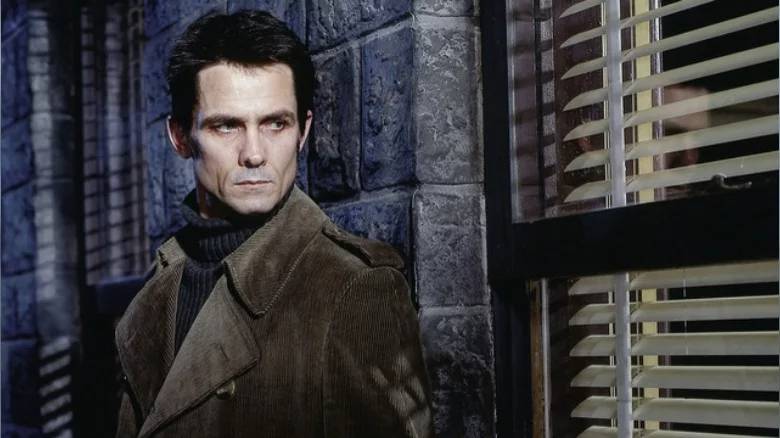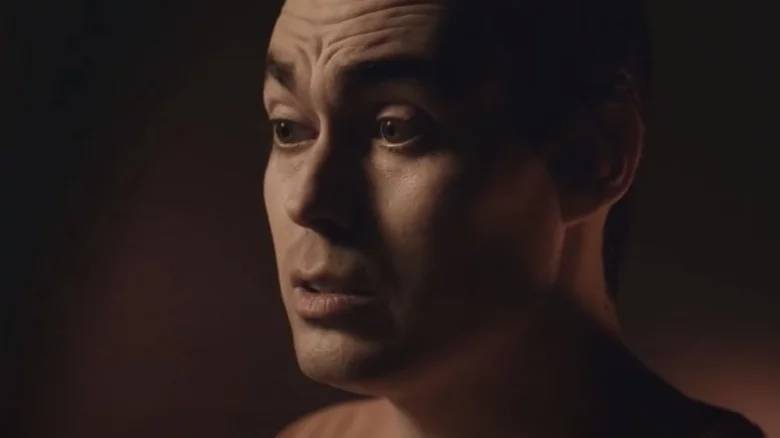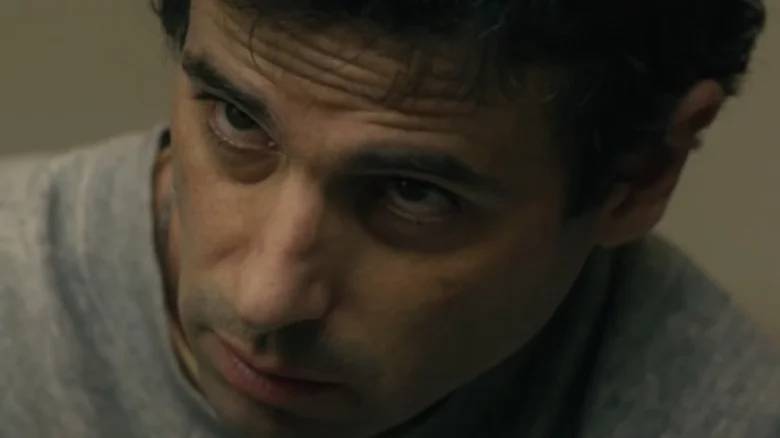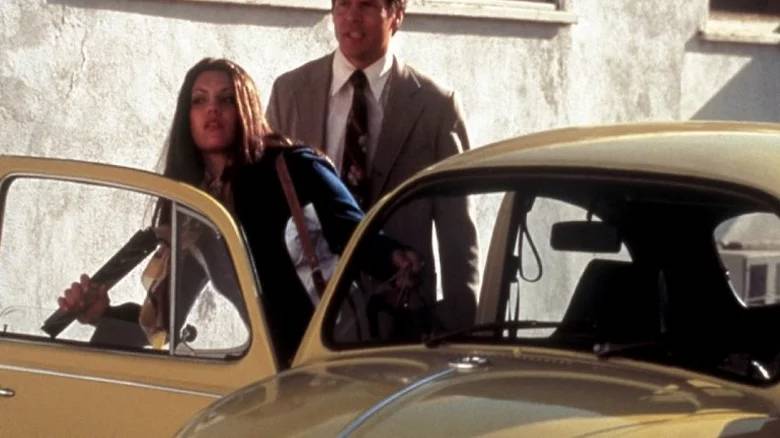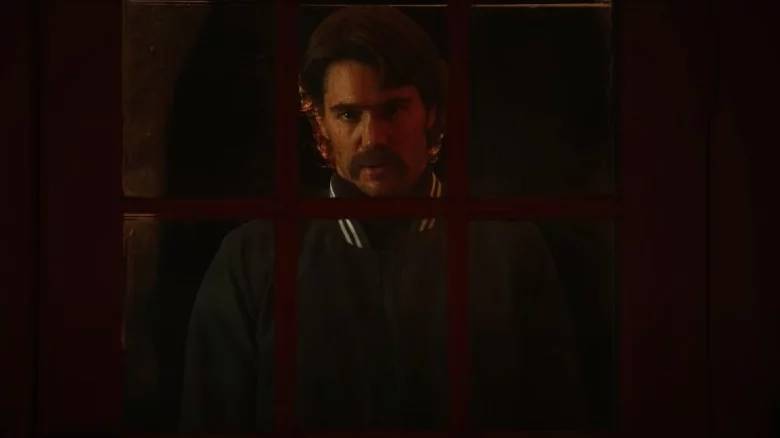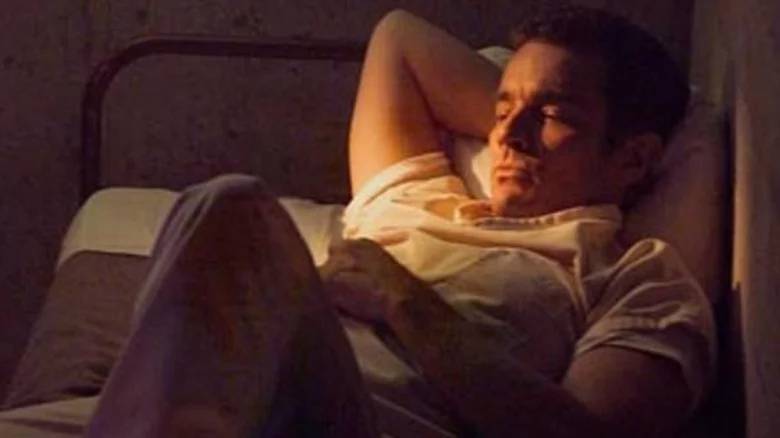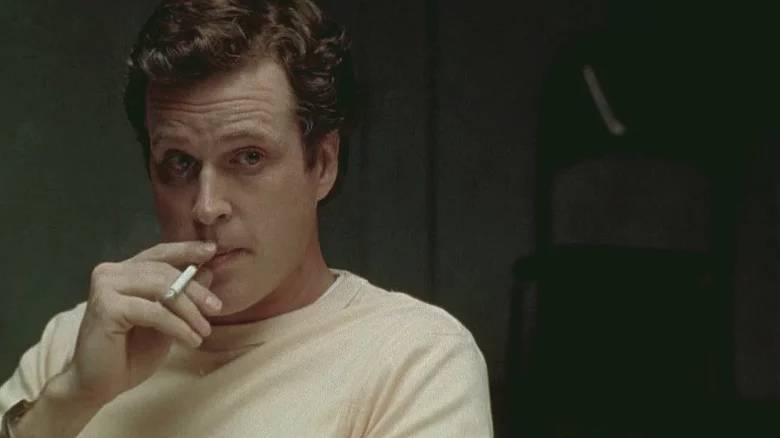Ted Bundy started his murderous spree more than 40 years ago. He charmed America with his charisma and “excellent looks,” although that last claim is dubious, through early arrests and a widely reported trial. Everyone was interested in learning why the man showed such a flagrant disregard for human life, especially women’s lives, from the detectives investigating the case to psychologists to newspaper journalists. Numerous books and documentaries have attempted to delve deeper to understand what made one of the most notorious killers in the world tick, including Netflix’s 2019 releases “Conversations with a Killer: The Ted Bundy Tapes” and “Ted Bundy: Falling for a Killer.”
Numerous major and independent movies with Bundy as the subject have also been made throughout the years. Many are schlocky, low-budget productions that fall short of presenting novel insights or novel viewpoints. Others, however, take a more cautious approach to the Bundy killings, only mentioning the tragedies in favour of reevaluating Bundy by looking at the ties in his life. There is no disputing the fact that Ted Bundy was a monster. However, a number of the examples told here serve as intriguing case studies in human nature and demonstrate how so many innocent individuals were duped by someone who appeared to be your neighbour.
Ann Rule Presents: The Stranger Beside Me
The 2003 adaptation of the acclaimed book “The Stranger Beside Me,” which was adapted for television, did not suffer from a tight budget. The movie offers an interesting look at Ted Bundy’s platonic relationships thanks to Billy Campbell’s portrayal of the murderer and Barbara Hershey’s portrayal of Ann Rule, who used to work at a crisis centre with him. The script was co-written by Matthew McDuffie and Matthew Tabak, and it is directed by Paul Shapiro.
In this movie, Bundy’s crimes take a backseat to the focus on his friendship with Rule. Rule, like many others, had no reason to believe that her coworker was involved in gruesome murders, but as the victim count rose, she started to have second thoughts and eventually reported Bundy to the police. Her report is only added to a mountain of papers since law enforcement is so overloaded with leads.
“The Stranger Beside Me” has a distinctly distinct point of view. Any form of exploitation is avoided in favour of meaningful, compelling storytelling. Of course, Hershey’s emotionally charged performance (“Black Swan,” “The Entity”) goes a long way toward grounding this account of true events.
Bundy: An American Icon
Movies on Ted Bundy are already racy and fixated on our society’s fascination with the macabre. The 2008 film “Bundy: An American Icon” (also known as “Bundy: A Legacy of Evil”) presents Bundy’s life narrative via a narrow perspective despite being billed as a biography. His early life is skewed in order to arouse extreme empathy in the viewer. That would be acceptable if this were a dramatised account, but given the circumstances, such blatant inaccuracy is at best irresponsible. Flashbacks are interspersed with dull explanations of Bundy’s atrocities, revealing nothing that hasn’t already been covered in far better movies.
Bundy: An American Icon has minimal artistic quality while Michael Feifer is in charge of the direction. This is a bottom-of-the-line offering due to its lousy production, mediocre photography, and lacklustre lead performance by Corin Nemic. Although it’s not a flaw inherently, the low budget has a crudeness that might be improved by better, more experienced directors. But in this instance, it is merely a tiresome demonstration of perverted aggression with nothing noteworthy or novel to offer about its subject. You have to question why a horror legend like Kane Hodder, best known for playing Jason Voorhees in the “Friday the 13th” series, would support such a heinous act.
Bundy: The Deliberate Stranger
The fact that “Bundy: The Deliberate Stranger” was published when Ted Bundy was still alive shouldn’t be shocking. The movie provides an accurate representation of Bundy’s crimes. It was first broadcast on NBC as a two-part miniseries. In her 1994 autobiography “Defending the Devil: My Story as Ted Bundy’s Last Lawyer,” even his attorney Polly Nelson gave the movie high marks. Despite its excessive three-hour running time, Mark Harmon excels in his Golden Globe-nominated performance as the serial murderer, who is mostly portrayed as a scary charmer with a crazy streak.
The book that served as the inspiration for the movie was released in 1980 by Seattle Times reporter Richard W. Larsen. The author, Larsen, has covered Bundy’s life and actions in real time, beginning with an interview he recorded with Bundy in 1972 during his political career and continuing through the slayings. His perspective offers significant insights and is based on his personal experiences. In “The Deliberate Stranger,” directed by Marvin J. Chomsky, the plot is expanded upon by a closer examination of Bundy’s private life, including his employment at a suicide hotline and his developing connection with Elizabeth Kendall (Glynnis O’Connor), whose name was changed for the movie to Cas Richter.
Bundy and the Green River Killer
Budgetary constraints should not be used as an excuse to ignore a movie. Instead, what filmmakers accomplish with their constrained means is what counts. Unfortunately, “Bundy and the Green River Killer” fails to transcend its limited resources or have anything worthwhile to say. This 2019 movie, which was directed by Andrew Jones, is a feeble attempt to go into the life of notorious murderer Gary Ridgway, whose case notably sought advice from outsiders, including death-row convict Ted Bundy.
Respectfully, Bundy and Ridgway receive little life from Richard Mark and Jared Nelson. Although both actors exhibit a peculiar, aloof tendency in their performances that would work quite well in another context and with a better script, they frequently feel wholly disconnected from the rest of the scene and its other characters.
Seattle and Tacoma, Washington, became the setting for Ridgway’s murders, which primarily targeted sex workers, throughout the 1980s and 1990s. The inquiry was headed by David Reichert, assisted by Robert Keppel, who plays David Richards in the movie and is performed by Mark Homer (Bob Keller, played by Phillip Roy). The facts of the case are graphically recounted in “Bundy and the Green River Killer,” especially how Bundy wrote Reichert a letter to offer his assistance and numerous of their one-on-one conversations. Although Bundy did give the task team advice, it is overstated that he was instrumental in cracking the case.
Extremely Wicked, Shockingly Evil, and Vile
The Ted Bundy movies that don’t spend much time on the murders are the finest. Apart from Zac Efron’s odd casting (he’s way too attractive), the story’s perspective is what makes “Extremely Wicked, Shockingly Evil, and Vile” unique. Instead of giving Bundy yet another platform, director Joe Berlinger gives Lily Collins’ Elizabeth Kendall the microphone.
The movie offers the audience a viewpoint we’ve never seen before and draws inspiration from Kendall’s own story, “The Phantom Prince: My Life with Ted Bundy.” We observe the two’s courtship, love story, and family-raising endeavours. We see Liz reconciling the devoted husband and father she knew with the insane assassin on the news as Bundy plans his rampage. You can readily comprehend the spell Bundy cast over her and the many other women in his life thanks to Collins’ often poignant, sometimes soul-crushing performance. Even though Efron’s performance as Bundy isn’t very inspired, it works because Bundy isn’t the story’s narrator. Since Liz is the only one who can tell it, it is empowering for her to do so.
No Man of God
Since Ted Bundy was put to death more than 30 years ago, little little remains unknown about one of history’s most notorious murders. Everything has been scrutinised, including his early years, political career, and murders. Nothing has been overlooked.
Having said that, “No Man of God” is one of the Bundy filmography’s more unexpected inclusions. The tale is reexamined in the film by Bundy’s “relationship” with FBI agent Bill Hagmaier, which was directed by Amber Sealy. The film is based on transcripts and recordings of talks that took place between 1984 and 1989, providing the framework for an unconventional viewpoint. Elijah Wood plays Hagmaier opposite Luke Kirby, who is the most masterfully terrifying Bundy on screen to yet.
Kirby’s cool, methodical portrayal appears uncannily similar to Bundy’s actual interviews. You can feel it deep within of you when he erupts in wrath or changes his friendly expression to one that is dangerous. The most unnerving part of Kirby’s performance—which is flawless throughout—is when he ultimately confesses to numerous atrocities and seems to be enjoying the details. A truly great actor must be able to execute these beats, and Kirby stands head and shoulders above the competition.
Ted Bundy
Director Matthew Bright does a good job of portraying Ted Bundy’s double existence. The 2002 movie “Ted Bundy,” which Stephen Johnston co-wrote, contrasts Bundy’s ostensibly beautiful family background with the horrific violence that earned him notoriety. A sometimes-distracting juxtaposition between lighthearted musical selections and ominous visuals emphasises how lovely the serial killer actually was. Alongside Boti Bliss, who is partially modelled on Bundy’s real-life partner, Elizabeth Kloepfer, Michael Reilly Burke gives a strong portrayal as Bundy.
In conveying Bundy’s narrative as honestly as it can without changing it for the audience, the movie mainly succeeds. The third act has several unsettling scenes that highlight Bundy’s complete contempt for human life, especially a rape scenario involving two of his victims. These scenes have an unsettling reality that seems to have been lifted directly from the rape-revenge movie “I Spit on Your Grave” from 1978. The movie treads the border of exploitation without ever going overboard. Otherwise, “Ted Bundy” guides viewers through the case’s facts, leading up to Bundy’s electric chair execution.
Ted Bundy: American Boogeyman
Nobody could have imagined a heartthrob from the 1990s would take on the identity of a serial killer, but here we are. Chad Michael Murray is simply too gorgeous to carry off Bundy’s peculiar, mousy appearance, as is the case with most actors cast in the starring roles. The “One Tree Hill” star, though, has a lot of presence, especially in solo scenes where he must delve deeply into the psychosis of a killer.
The movie “Ted Bundy: American Boogeyman,” which is directed by Daniel Farrands, is refreshingly less exploitative than his awful depictions of the killings of Sharon Tate and Nicole Brown Simpson. Farrands, who is widely recognised for writing 1995’s “Halloween: The Curse of Michael Myers,” easily could have tipped into the pit of disgusting storytelling, but he maintains control. With little direction or purpose, he leads the audience through the standard plot points, from Bundy’s early murders through the massacre at Florida State University. An otherwise uninteresting perspective on the plot muddles some beautiful photography (a critical scene with Murray’s silhouette as he approaches the sorority is really scary, for example).
The finest scene in the movie features Murray alone in a Florida boarding house filled with mannequins. Days after his widely publicised escape, Bundy has had enough and is ready to snap. It’s one of Murrary’s most unnerving scenes and feels like a holdover from 2012’s “Maniac.” It’s also the only truly standout moment in an otherwise shrug-worthy entry on our list.
The Capture of the Green River Killer
The Green River Killer: The Capture is not entirely a waste of time if you have three hours to kill and you’re bored. You can anticipate the typical over-dramatization of events and unnecessary story points and characters in Lifetime-produced content. This Norma Bailey-directed film, which is touted as a two-part miniseries and is similar to 1986’s “The Deliberate Stranger,” delves further into the tale of the search for Gary Ridgway, elaborating on detective Dave Reichert’s personal life and how he came to be associated with Ted Bundy.
James Marsters barely makes an appearance in one scene as Bundy, and his performance is unmemorable. That should be recognised since it shows how little Bundy actually contributed to the case’s resolution. Despite this, the 2008 film does its best to appeal to the emotions. Amy Davidson plays a new character named Helen who stands in for the several real-life victims whose lives were shattered. The addition of her story, which follows her from domestic conflict to sex work as a means of subsistence, keeps a dry crime procedural together. Even after her death, Helen frequently addresses the camera directly, reducing the entire film to the level of a glorified PSA.
The Riverman
Both “Saw” and “The Riverman,” produced by A+E Networks and starring Cary Elwes, were released in 2004. Most people probably weren’t aware of Elwes’ portrayal of the psychotic serial killer because of the abundance of Bundy-related media. Detective Dave Reichart (Sam Jaeger) and his search for the Green River Killer are primarily the subject of the Bill Eagles-directed movie. The investigation involves Robert Keppel (Bruce Greenwood), a professor of criminology at Washington State who was on the task force that apprehended Ted Bundy ten years earlier. Soon after, Harry receives a private letter from Bundy offering his assistance in finding the new murderer.
Bundy is a supporting character as a result, but Elwes excels in the role. Elwes gives a genuinely terrifying performance in the numerous one-on-one chats in which Bundy appears. These conversations are startlingly intriguing and usually unsettling. He moves with a surprising subtlety between Bundy’s slick charm and his menacing presence. It’s a terrible shame that Elwes was never given the opportunity to play the lead in a more Bundy-centric movie because it’s never overheated or underbaked.
Bundy’s guidance on how to apprehend a criminal, notably his suggestion to take into account the probability that the murderer had previously been caught, resulted in an arrest and, ultimately, a conviction. The movie “The Riverman” is watchable and helps the audience comprehend the man who is behind the madness.


